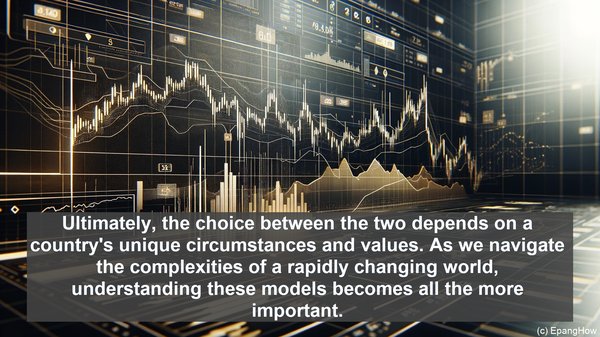Introduction: The Significance of Economic Models
Hello everyone! When it comes to understanding how societies function, economic models play a pivotal role. Today, we’ll be focusing on two such models – the welfare state and the social market economy. While they may seem similar at first glance, they have distinct characteristics that shape the way governments and markets operate. So, let’s dive in!
The Welfare State: Prioritizing Social Security
The welfare state, as the name suggests, places a strong emphasis on the well-being of its citizens. In this model, the government takes on the responsibility of providing a safety net through various social programs. These programs encompass areas such as healthcare, education, and unemployment benefits. The underlying principle is to ensure that no one is left behind, and that even the most vulnerable members of society have access to essential services. This often entails higher taxation, as the government needs substantial funds to sustain these programs.

Social Market Economy: Balancing State Intervention and Market Forces
On the other hand, the social market economy is characterized by a delicate balance between government intervention and the free market. While it acknowledges the importance of market forces in driving economic growth, it also recognizes that unregulated markets can lead to inequality and social disparities. To address this, the government sets certain regulations and standards to ensure fair competition and protect consumers. Additionally, it actively promotes social policies, such as affordable housing and worker protection, to create a more equitable society. The aim is to combine the efficiency of the market with the social responsibility of the state.
Distinguishing Factors: Key Differences
Now, let’s delve into some of the key distinctions between the two models. One significant difference lies in the level of government involvement. In a welfare state, the government plays a more direct and extensive role, often being the primary provider of social services. In a social market economy, while the government is involved, it also allows for private enterprises to operate and compete. Another notable difference is the funding mechanism. As mentioned earlier, the welfare state relies heavily on taxation to finance its programs. In contrast, the social market economy leans more towards a mixed funding approach, with a combination of taxes, contributions, and market-generated revenue.

Societal Impact: How the Models Shape Communities
Both the welfare state and the social market economy have profound implications for society. In a welfare state, the focus on social security can foster a sense of solidarity and reduce inequality. However, the higher tax burden can also create economic disincentives and impact private investment. In a social market economy, the emphasis on market efficiency can drive innovation and entrepreneurship. Yet, without adequate regulations, it can lead to monopolies and exploitation. Striking the right balance is crucial for ensuring both economic growth and social well-being.
